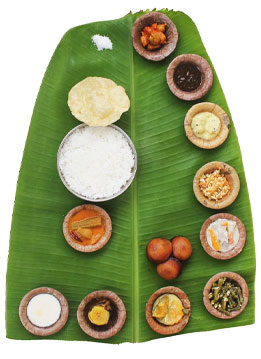Traditional dietetics is the most suitable as it is a result of centuries of trial and error and geographical relevance that finally culminates into the most digestible cuisine. But when the migration factor is considered, we need to carefully balance between the traditional dietetics and geographically suitable eating habits. This applies to the availability of exotic foods.
Our diet should essentially include rice, moong daal, rock salt (Sindhava), amalaki, barley, pure water, milk, ghee, and honey. Ayurveda recommends Vegetarianism as the most pure and beneficial (Sattvik) option.
Going by time is good, going by hunger is better, but if hunger and time coincide in a regular pattern that is the best. Hunger is indicative of digestion of previously eaten food. As digestion is a batch by batch process we have to wait for the complete digestion of the previous meal before deciding to go for the next one.
Ayurveda gives a perfect illustration to understand this concept; If you need to cook rice, you take raw rice in a vessel add water and keep it over the flame till it is completely cooked and if there is need for more, you start the process anew after removing the contents of the vessel. The same pattern holds good for digestion.
Imagine the mess that results in adding raw rice intermittently into the vessel in which the content is already cooked half way! Hence eating in between meals is a strict no no in Ayurveda.
The indicators for a well digested meal are - a clear burp, lightness of body, timely elimination of metabolic and intestinal wastes, onset of hunger and thirst. Plan your dinner in such a way that you get at least 2 hours gap before going to bed, the idea is that the food should be semi digested by the time you go to sleep.
As a rule, two good meals are more than sufficient for an individual and something like a 11am lunch and 7pm dinner would be ideal. So "Don't eat if you are not hungry and don?t fast if you are" is the mantra.
In the traditional way of housekeeping, the kitchen is kept as the cleanest (suchi) and most hygienic place in the house. Some even pray before igniting the stove and call it a day when the stove is thoroughly scrubbed and mandalas (auspicious designs) are drawn around it with reverence.
So, the eating place should be absolutely hygienic and supportive to having a meal in peace. Though our present day eating habits are grossly distorted, Ayurveda suggests that we should neither eat in a hurry nor show sloth around food as both these can show detrimental effect on the digestive process. Start the meal by mentally contemplating on a small prayer, never be pre-occupied with something else while having food, we need to be focused to enjoy a meal and hence there is a need to switch off mobile phones and especially televisions that cast disturbing familial feuds right at the dinner time. Next we need to be absolutely calm, peaceful and chew thoroughly before gulping every morsel, the rule is "drink solids and eat liquids" meaning chew the solids so thoroughly that it is almost liquid by the time you gulp it down, and next when it is liquids, take it sip by sip so that the oral digestion is given a fair chance to show its effect.
The traditional way of sitting on a floor mat and bending down to take every morsel has its upside, it does not allow you to eat more than the stomach can handle. Still we need to mentally calculate the volume our stomach can handle, and this volume has to be filled with a third of solid foods, a third with fluids and the last third to be left empty this aids effortless propulsion of food in the intestinal lumen.
